|
56. Plebejus idas (Linnaeus 1761) / Idas blue / Lycaenidae – Polyommatinae
NL: vals heideblauwtje / D: Kleiner Bläuling, Ginster-Bläuling, Idas-Bläuling, Ginster-Silberfleckbläuling / F: argus sagitté, l’azure du genêt
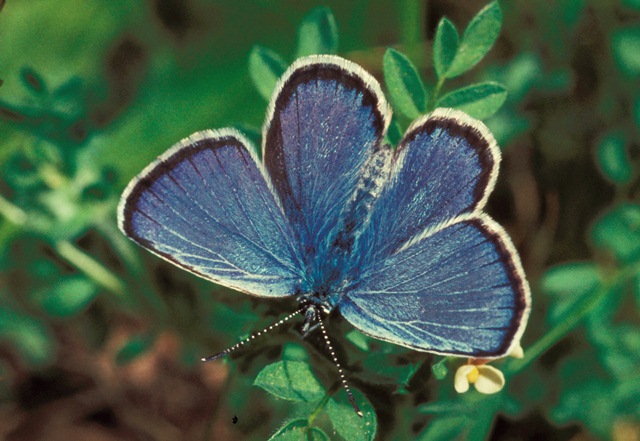 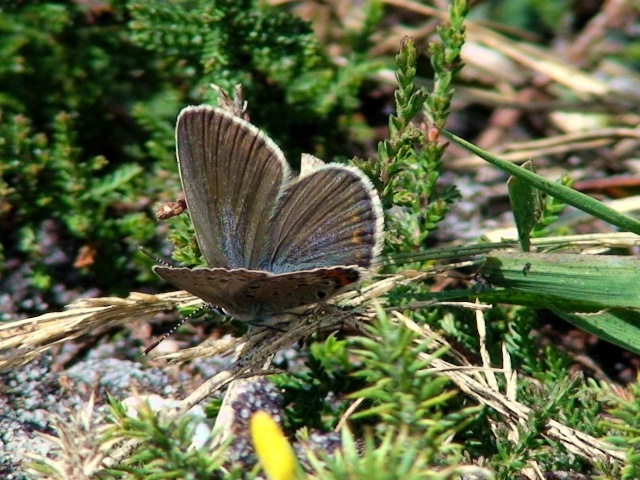 
Photographs: Frits Bink, Rosita Moenen, Frits Bink ©.
Small, wing length 14 (12-15) mm. Now extinct in the Benelux, it was known from heathland in the Netherlands and Flanders and from grassland in Wallonia.
The butterfly is on the wing from mid-June until early-August and peaks mid-July. When there are two broods the first one from end-May until end-June and peaks early-June, the second one from mid-July until mid-September and peaks mid-august.
It is known from sub-continental to severe continental climates, amplitude 7 to 20. Required heat sum is 200°d and maximum tolerated 1600°d, corresponding climate windows 15 and 34 weeks.
Plebejus idas occurs in many races in climate zones form sub-arctic to mild temperate and from west-Europe to America. From an ecological point of view it resembles P. argus; however, the latter occurs in a warmer climate, whereas P. idas is found north of the polar circle but P. argus not found north of mid-Scandinavia. In climates where the heat sum is more than 1300°d, P. idas produces a second brood.
Its disappearance from the Benelux is odd, since it is widely spread on heathland in Danish Jutland and in Normandy, France it is double brooded on warm sites on heathland, where it feeds on gorse.
Ecological characteristics
Behaviour over time
Overwintering: egg on wooden part of the host near to the ground.
Reproduction: oviposition starts after 3-5 days when the body contains 48 (40-54) eggs, potential production 2.2 times as much in a period of 13 days.
Larval feeding periods: 7 weeks in the period from end-April until end-June.
Generations: one in temperate climate, two in warmer ones.
Spreading of risk: not observed.
Life cycle: egg 26-41 weeks; larva 56 (50-61) days; pupa 18 (14-21) days. In the case of a second brood in high summer: eggs about 8 days; larva 32 (30-34) days.
Life span of adult: rather long, 3 weeks.
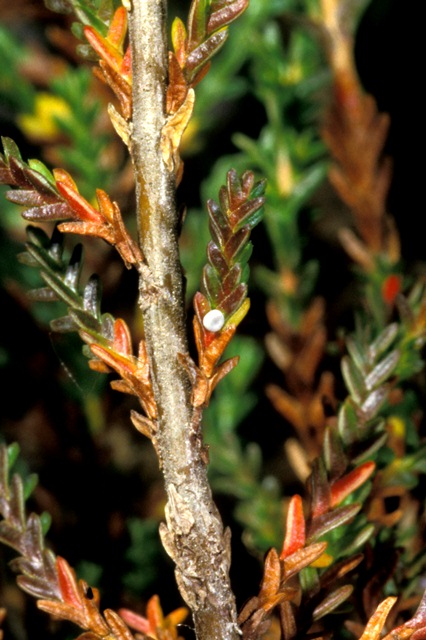 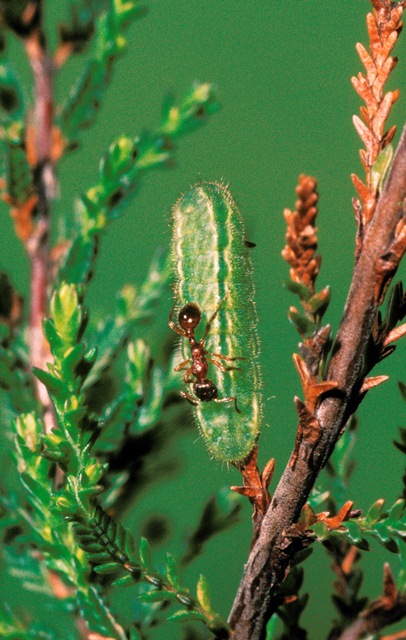
Photographs: Frits Bink ©.
Behaviour in space
From stay-at-home to migrant: stay-at-home, spatial requirement modest.
Finding a mate: males perch but will also congregate with females on a roost or at a drinking place, sometimes also accompanied by Plebejus argus.
Orientation in the landscape: on gradients between short and tall herb vegetation, on mosaic patterns.
Oviposition: on wooden parts of the host near to the ground. In second generation in early summer, however, on shoots or flower buds.
Defence
Threats from other organisms: avoiding predation risk by camouflage in the larval stage.
Myrmecophily: rather strong, full array of ant-attracting and appeasing organs present but their application is less precise than in P. argus. The larvae are not tended all the time.
Threats from the environment: lowering of the food quality of the host plants due to vegetation succession and air pollution.
Feeding habits
Adult: nectar of small flowers.
Larva: when young feeds on meristem or buds, when nearly fully grown it eats also mature leaves.
Larval foodplants
Plant species: Cistaceae, Helianthemum nummularium.
Ericaceae, Calluna vulgaris.
Fabaceae, e.g. Cytisus scoparius, Genista minor, G. gallica.
Journal
Rearing experiment based on specimens from Ljugarn, Gotland, Sweden:
15 July 1982: two females captured.
16 July: about 25 eggs laid on ling (P. idas is widely dispersed on Gotland in pinewoods with an undergrowth of ling, Calluna vulgaris).
Overwintered outdoors.
13 March 1983: plant with eggs taken indoors.
24 March: a few eggs hatched, larvae on the top of the twigs, the meristem point.
3 April: larvae fed on meristem point of the twig which had already grown 3-4 mm.
8 April: one larva had already moulted.
1 May: larvae last instar.
8 May: larvae fully grown, they were less accurate in using the tentacles than P. argus.
13 May: first pupa observed, normal girdle type attached to a leaf.
23 May: two more larvae were pupating.
3 June: first adult appeared, male.
8 June: all pupae had hatched.
Table 56-1. Results of dissections

Table 56-2. Collection and observation localities
D, Steigerwald, 49° 39’N – 10° 23’E; 24 July 1984.
DK, Lundby 56° 55’46”N – 9° 29’ 43”E; 8 July 2005.
DK, Tofte Mose 56° 50’ 39”N – 10° 11’ 11”E; 5 July 2005.
EST, Valge raba 58° 26’ 29”N – 25° 14’ 09”E; 8 July 1999.
EST, Viruna 58° 28’ 51”N – 23° 58’ 32”E; 5 July 1999.
EST, Endla Nature Reserve, 58° 52 34”N – 26° 16’21”E; 10 July 1999.
EST, Mannikjärv 58° 52’07”N – 26° 15’ 37”E; 15 July 1999.
F, Normandy, Lessay 49° 12’ 22”N – 1° 31’ 49”W; 2 September 2007, 10 September 2007.
NL, Tubbergen, Paarden Slenken (Mander Heide) 52° 27’ 19”N – 6° 49’ 38”E; 26 July 1960 (together with P. argus) not observed after 24 July 1985.
S, Gotland, Ljugarn 57° 22’ 03”N – 18° 41’ 31”E; 15 July 1982, 24 June 2004.
S, Gotland, Lickershamn 57° 51’05”N – 18° 37’ 46”E; 17 July 2004.
S, Gotland, Russväter 57° 23 29”N – 18° 43’ 36”E; 21 June 2004, 16 July 2004.
S, Hornslandet 61° 37’31”N – 17° 26’ 48”E; 17 August 1985.
S, Östhammar 60° 23’ 01”N – 18° 26’ 51”E; 19 August 1985.
S, Tännäs 62° 26’ 29”N – 12° 41’ 20”E; 15 August 1985.
Fig. 56-1. Plebejus idas, phenogram adapted from Ebert & Rennwald 1991b: 323 (lighter part), Bos et al. 2006: 192 (darker part).
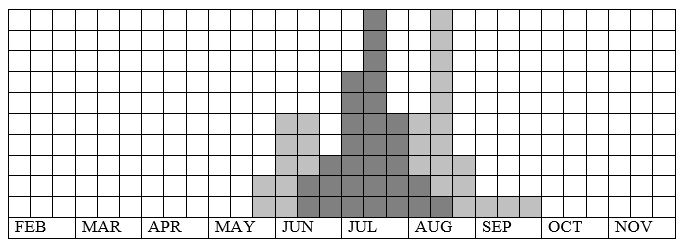
Fig. 56-2. Plebejus idas, habitat characteristics.
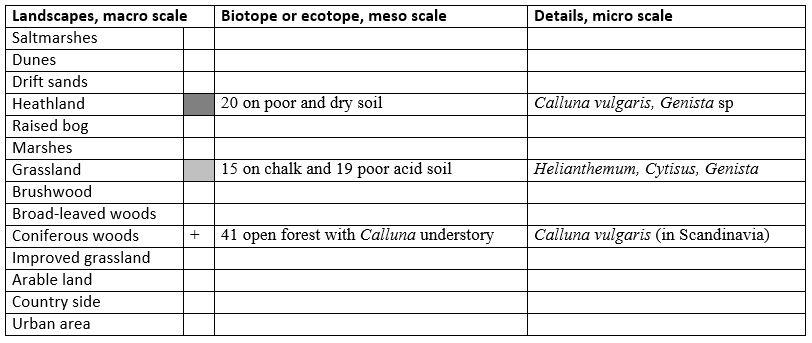
Fig. 56-3. Plebejus idas, climate matrix, heat-sums 200 - 1600°d.
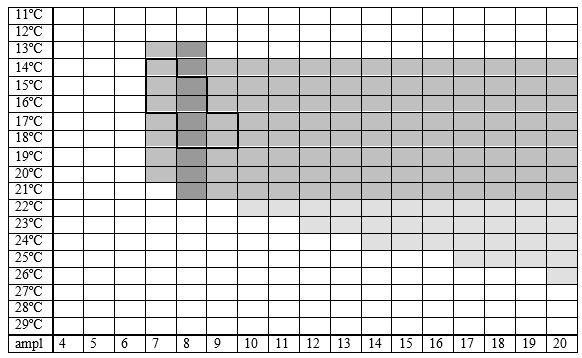
|










